The Games Rating Authority was originally set up as the Video Standards Council, a standards body for the video and video games industries. Today the Games Rating Authority is an Administrator of the PEGI age rating system which is used in over 30 countries across Europe.
Content descriptors
Understand what content descriptors are and how they provide additional information on what is contained within a game
The 9 content descriptors
The Games Rating Authority issue visual content ‘icons’ alongside the rating to let you know exactly what a particular game contains, such as violence or drugs. These icons appear on the outside of game packaging and on many digital storefronts.
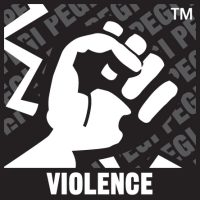
Violence
- This descriptor means the game contains depictions of violence.
- In games rated PEGI 7, any violence is likely to be non-realistic, non-detailed or only implied (for example, vehicles being hit without any sight of the occupants).
- In games rated PEGI 12, there may be more detailed and realistic-looking violence towards fantasy characters. However, while there may be moderate violence towards human characters, there must not be any sight of blood or injuries, or an emphasis on pain, during violence towards humans.
- In games rated PEGI 16, there may be graphic violence towards fantasy characters, and realistic violence towards human characters.
- In games rated PEGI 18, there may be graphic violence towards human characters, including violence against vulnerable and defenceless characters, and depictions of sexual violence.
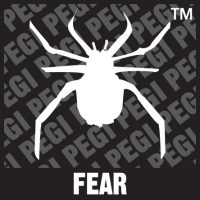
Fear
- This descriptor appears on games with a PEGI 7 rating if they contain pictures or sounds that may be frightening or scary to young children.
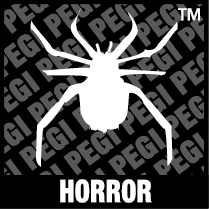
Horror
- This descriptor appears on PEGI 12 and 16 rated games.
- At PEGI 12, this descriptor means there may be moderate horror sequences, such as characters in danger or ‘jump scares’, disturbing images, such as sight of dead bodies and injury details.
- At PEGI 16, this descriptor means there may be intense and sustained horror sequences, or strong gory images, such as mutilated or dismembered bodies.
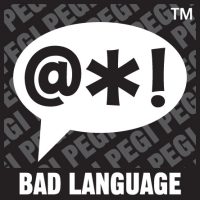
Bad language
- This descriptor means the game contains use of potentially offensive language.
- Games rated PEGI 12 may contain a range of mild and moderate swearing, although the terms used will stop short of the stronger sexual expletives, such as the ‘f’ word. They may also contain rude gestures and implied stronger language (for example, sexual expletives that are partially disguised by bleeping or asterisks).
- Games rated PEGI 16 and PEGI 18 may contain the stronger sexual expletives, such as “the ‘f’ word”, and may also contain use of discriminatory terms.
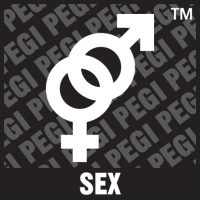
Sex
- This descriptor means the game contains sexual material, which may include sexual descriptions or sexual activity, as well as nudity in a sexual context.
- In games rated PEGI 12, there may be descriptions of sexual activities, innuendo, sexual posturing, or an implication of sexual activity (for example, movement underneath bedclothes).
- In games rated PEGI 16, there may be depictions of sexual activity without visible genitals.
- In games rated PEGI 18, there may be depictions of sexual activity with visible genitals.

Gambling
- This descriptor means the game contains moving images that teach and/or glamorise gambling. The descriptor is not used where gambling simply occurs as part of the storyline. Games that include such elements are rated PEGI 18.
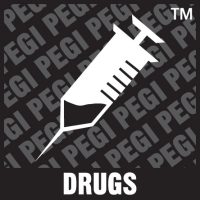
Drugs
- This descriptor means the game contains depictions of the use of illegal drugs and/or prominent use of, or glamorisation or promotion of controlled substances.
- In games rated PEGI 16, there may be depictions of illegal drug use or prominent use of tobacco or alcohol.
- In games rated PEGI 18, there may be glamorised portrayals of illegal drugs or encouragement, glamorisation or prominent promotion of controlled substances.
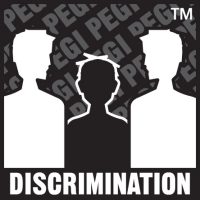
Discrimination
- This descriptor means the game contains depictions of ethnic, religious, nationalistic or other stereotypes that are likely to encourage hatred.
- Games featuring this type of content will be rated PEGI 18 and may infringe national laws on hate speech.

In game purchases
- This descriptor indicates that real money can be used to purchase additional items in the game, such as extra levels, new outfits or weapons, season passes or upgrades. This descriptor can appear in games at all rating levels, from PEGI 3 to PEGI 18.
- In some cases, purchases can be random. You may not know exactly what you are receiving when you make a purchase. For example, you may buy a pack of players for a sports game, but only find out which players you have received after you have made the purchase. In such cases, a line of text will appear beneath the descriptors indicating that the game includes ‘In-game Purchases (Includes Random Items)’.
